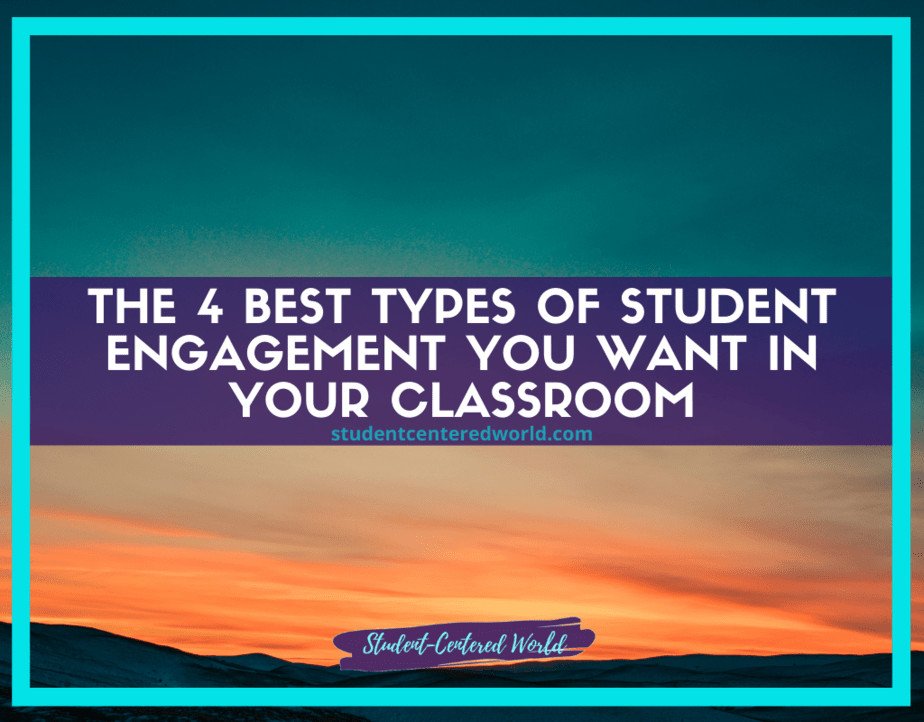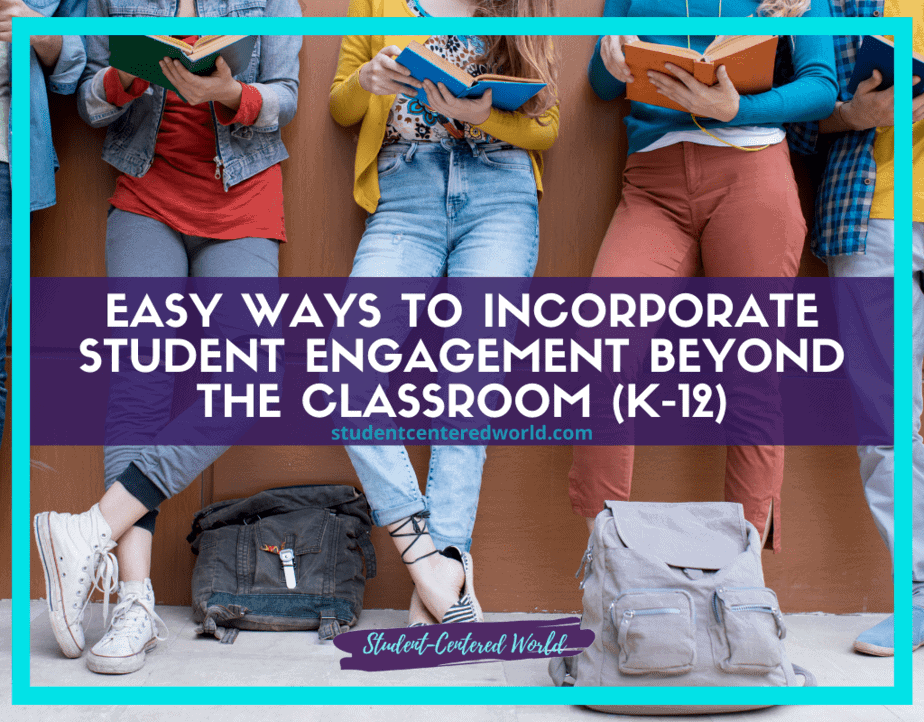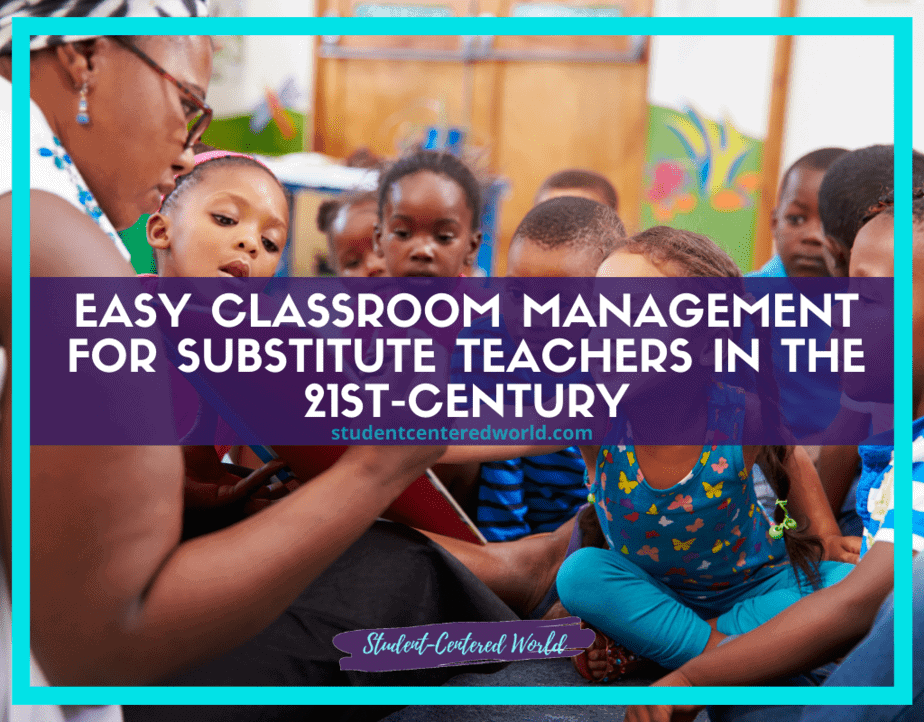4 Steps for Improved Communication in the Classroom
Have you ever noticed that any time something goes wrong, there is some type of communication breakdown? This is why, as teachers, it is so important to make sure we have methods and systems in place that help with communication in the classroom. This goes for interactions between students, other teachers, families, and especially us and our students.
I always tried to keep communication with my students simple. I used a communication system that the kids learned throughout the year. This keeps everything consistent and even parents understand what to expect from you and vice versa.
If nothing else, keeping the doors of communication in the classroom open between students, parents, guidance, administration, etc. allows for much less confusion and “I didn’t know” moments, which we know never go well. The less confusion and the more ways someone can find the answer to a question, the better. This shouldn’t be more work or time on your behalf; it’s just a matter of setting up systems and processes that stay consistent and work the entire year.
Preferred Methods of Communication
One of the most important communication things we can do with our students, especially if we teach older ones, is to find out what communication method they prefer. It could be email, phone call, text message, in-person communication…etc. Some of you may have already done this. However, I still get so many kids who tell me that no one ever asked them what communication method they preferred.
This goes for parents as well. Some may not have access to their phones during hours when you would be able to make a phone call to them and others may never check their email. You will be surprised just how many won’t respond to one method versus another.
Keeping communication open and organized is a huge stress reliever for everyone in the classroom. Actively communicating with students, parents, other teachers can help reduce problems that will arise during the academic year. It also eliminates communication with students that is not appropriate. Students tend to view communication among the adults at school in a similar way we do communication between parents and children; as statements or proposed plans of action that will be followed through by adults.
When conversations are open and ongoing, kids know what is going on. This helps them feel like they have control over what is going on in their lives.

Communication Binders
Organizing communication in the classroom can be something as simple as communication binders. These are books you make that keep communication flow open between you, your students, and their parents. You will need to set up a communication binder for each student.
This communication binder can be communication forms, communication logs, and communication summaries. Communication forms will keep your communication with each student in one spot – the communication log keeps a trail of communication between you and the parent that is open to both parents (if there are two) and adds communication between your other teachers at school.
Communication summaries are communication packages you send home at the end of each communication log that keeps a summary of communication between you and your student, parents, other teachers.
Basic communication forms to put in communication binders:
- Positive communication form – this is for positive communication with students. It can be used for communicating good things like successes or reminders and communication about things like class communication.
- Communication log – communication logs are kept in communication binders and can be turned in to the communication summary at the end of each week, month or quarter and will show communication you have had with parents during that time.
- Parent contact record – if your school does not use this, make sure you have communication forms that record communication with parents and communication methods.
- Class communication log – students fill this out after class communication time to let you, the other teachers, and parents know how communication went during that time.
This communication system is very simple, and I believe it should be done in most classrooms (and it can be digital or in print). It makes the job of communicating with students, parents & other teachers so much faster and communication with parents & students is opened up to give them a say in what communication they want from you. If you wish to contact a parent or student, you just see their preferred method and go from there. It is much less frustrating than having to follow up with a phone call not returned or an email not read because that is not their preferred method of communication.

Good Calls Home
Another way of opening communication in the classroom and crossing over to the students’ homes is from a program that went crazy on Twitter a few years back called “Good Calls Home“. I designed simple postcards to mail home. Once a week, I pick a student from each of my classes and send their family a postcard that highlights something special that the student did, or has been doing (or even if there has been a noticeable improvement) with a handwritten note from me.
This, I find, is even better than a phone call.
It might not be the one-on-one moment that an actual conversation would have, but it is something that is tangible and lasting. It is something that can be hung on a refrigerator or passed around at a family dinner. It becomes a source of pride and that sometimes is even better than a moment that may have to be cut short due to a lack of time (or the wrong person being spoken to for the proper praise).
I found a cute background and a great quote to type over it, made it postcard size (which prints out 4 onto one sheet), and then copied them onto cardstock. I cut them out and voila…done. On the other side, I wrote my note on the left, put the student’s information on the right, and into the mail it went.
Incorporating this as an “at home’ aspect of my student-centered curriculum helped parents to buy into what was going on in the classroom, too.
The nice part about doing it this way is that postcard stamps are not as expensive as regular stamps and also anyone who sees the mail can see the message. It’s a way to brag a bit on your student to anyone who can see the card. This is something that may not happen when you speak to just one person.
Communication in the Classroom
When communication is effective, it flows easily. It makes everyone feel good and is a positive experience for all. When communication is ineffective it can feel like a burden. It increases stress and decreases productivity. When communication is done well, effective communication skills promote teamwork, speed up decision-making, and improves communication in the classroom in many ways to help everyone do their job more efficiently as communication breaks down any barriers between people.
Communication is an integral part of communication in the classroom. As teachers, communication with each other must happen continually for all sorts of reasons that are important to the effectiveness of students and therefore communication in the classroom. Communication breaks down communication barriers between teacher and student, among staff members, parents, etc. Communication breaks down communication barriers between students and their peers, communication with school admin offices, communication with the community.
Communication is a two-way street – it depends on both people to communicate effectively. If you want your student to communicate better, try encouraging him or her to not just talk, but also listen. This will only help communication in the classroom overall.
Communication in the classroom can be different things depending upon the communication skills of the teacher and communication between others. Remember not only what is best for your student, but also how communication among those in the classroom will help classroom culture and interactions improve overall.

Steps to Better Communication Skills
1. Great listeners always do more listening than talking.
2. People who don’t understand proper communication in the classroom often talk about themselves instead of listening to others and taking an interest in their individual needs.
3. Good communication starts with good relationships, so make sure you are honing in on student intent and keeping a positive attitude, listening carefully, keeping on topic, and avoiding negative conversation if possible.
4. Treat communication in the classroom as a conversation between equals. No one wants to feel as if they’re being spoken down to.
5. It is important to try to communicate using kind words so that interactions are positive ones, even in those difficult moments.
6. Be yourself – communication in the classroom should be natural and never forced, otherwise, the students will see through it and will not be comfortable.
7. Communication can take lots of forms besides dialogue with others, e.g., eye contact/sending body language. Take them all into consideration.
So what do you think? Do you have communication issues in your classroom? What communication challenges do you face on a daily basis with communication in the classroom? What communication practices and communication habits do you have in your classroom? Think about this in relation to you and your classroom. A simple system will make all the difference in the world.
Stop Driving the Teacher Struggle Bus
Are you struggling with student engagement, apathy, or keeping your class on track?
💫💫 There’s hope! 💫💫
Join my free teacher workshop “Choosing Choice” and in just 60 minutes, you’ll craft a practical plan to revitalize your teaching. Discover the magic of student choice in boosting engagement, gain quick implementation ideas, and explore strategies for year-long success.
Unlike overwhelming workshops, my approach guides you in real-time, providing more classroom options, reducing stress, and giving you more personal time.
Plus, you’ll earn a 1-hour professional development certificate and have 7 days of access.
Don’t miss this chance to transform your teaching; click below to secure your spot now!






